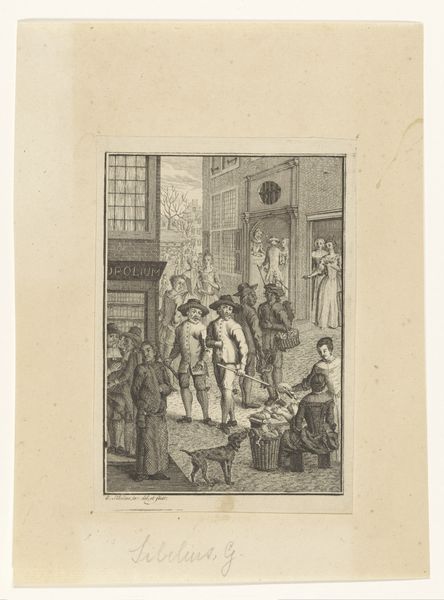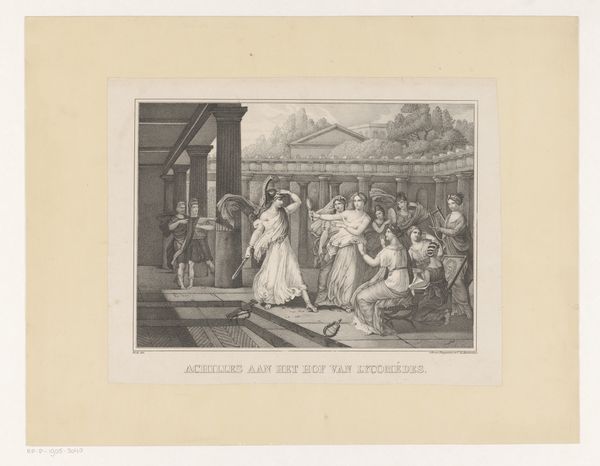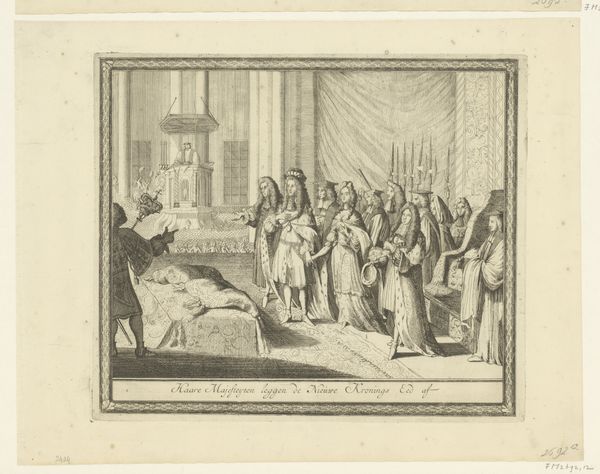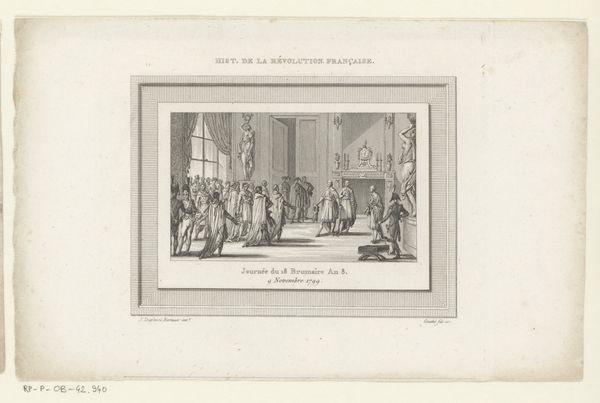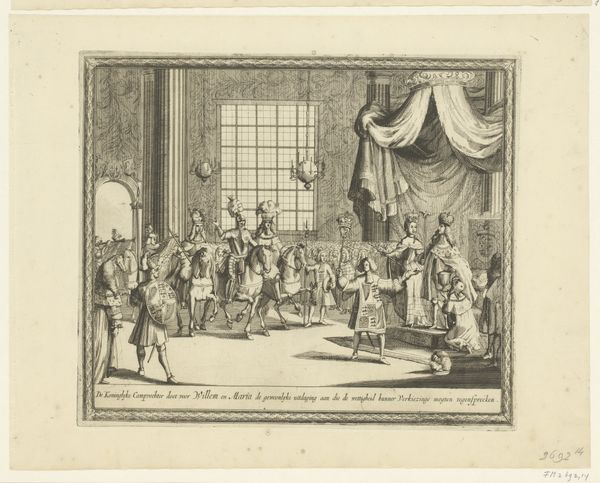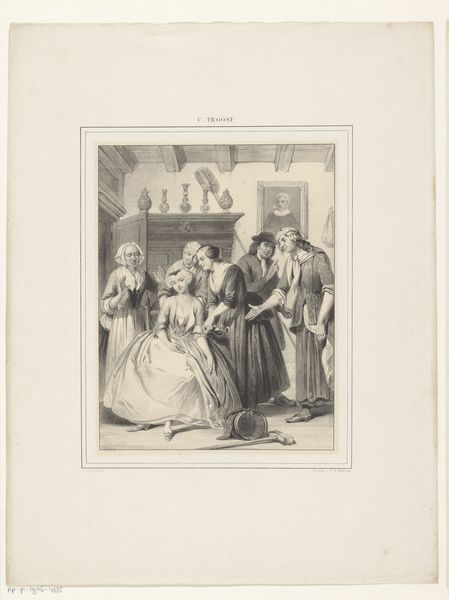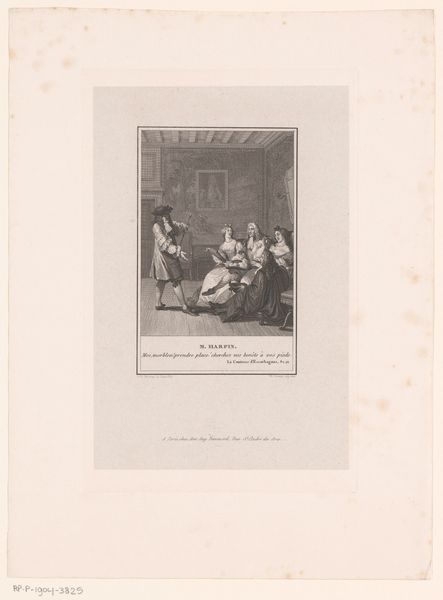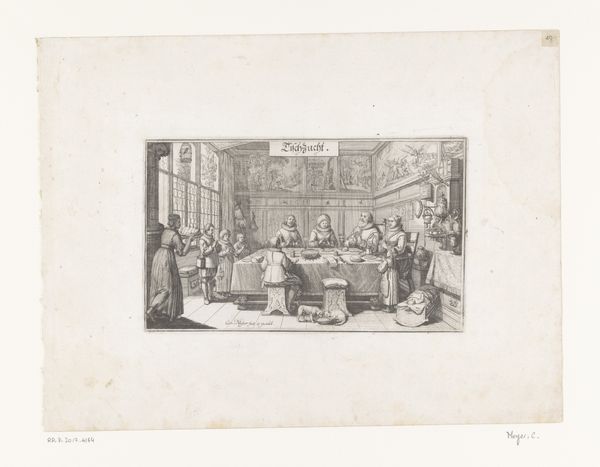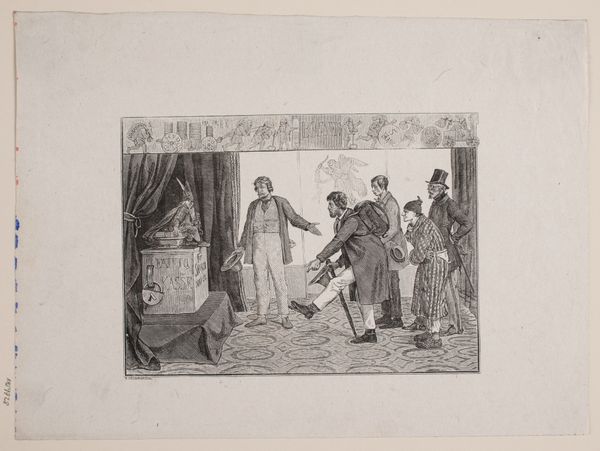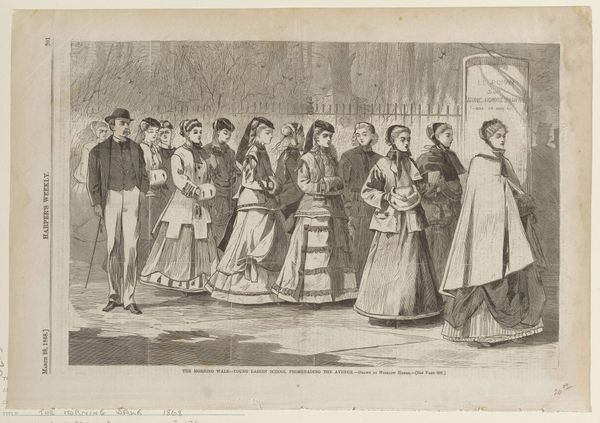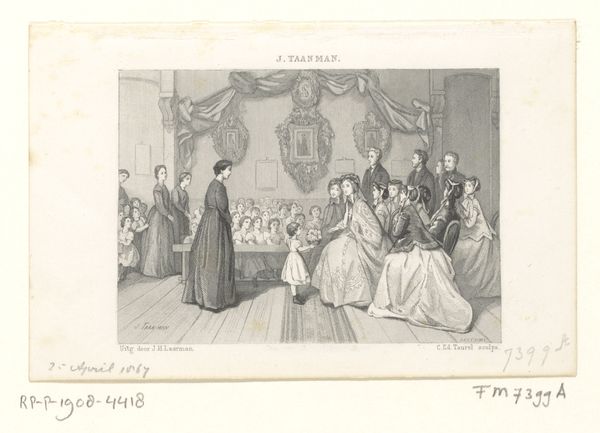
print, engraving
#
portrait
#
narrative-art
#
baroque
# print
#
old engraving style
#
group-portraits
#
genre-painting
#
history-painting
#
engraving
Dimensions: height 166 mm, width 211 mm
Copyright: Rijks Museum: Open Domain
Editor: This is "Bijeenkomst van Quakers te Amsterdam," or "Meeting of Quakers in Amsterdam," created between 1736 and 1738 by Pieter Tanjé. It's an engraving, and it strikes me as remarkably ordered and calm despite depicting so many people in an enclosed space. What catches your eye when you look at it? Curator: Immediately, the stark geometry overlaid on the organic arrangement of figures commands attention. Notice how the artist uses the rigid lines of the architecture – the ceiling beams, the window frames, even the backs of the benches – to create a grid-like structure. Editor: I see that now. It's like a structured container for the human forms. Curator: Precisely. This structure contrasts significantly with the curves of the figures, their clothing, and their postures. This interplay creates a tension, a dialogue between order and spontaneity. Consider also the varying tones achieved through the engraving technique. Where does your eye linger within this composition? Editor: I’m drawn to the figures at the center; they seem to have brighter lines around them. Curator: A keen observation. That area could represent a visual crescendo – perhaps indicating an important interaction. The artist uses light and dark, not necessarily to mimic reality, but to direct the viewer’s gaze and emphasize specific relationships within the depicted scene. What do you think the relationship between the light and figures suggests? Editor: Perhaps highlighting the relationship between the leader and their audience? Curator: Possibly! That interpretation highlights the tension inherent in representational art. This image encourages us to focus on the relationship of forms as signifiers. I think seeing it in that sense creates an impactful lens. Editor: I had not considered analyzing it solely through composition, color, and form. Thank you!
Comments
No comments
Be the first to comment and join the conversation on the ultimate creative platform.
